In the early morning, I left my house in Yokohama, drove to Toyosu in Tokyo, and parked my car in the parking garage near the Toyosu Fish Market around 5 a.m. I was so excited that I rushed to Market House No. 7, where the tuna auction would begin at 5:30. Since it was a weekday and very early morning, I expected fewer visitors than on the weekends. However, as soon as I arrived at the auction viewing corridor, I realized I had underestimated how popular it would be among tourists from abroad. There was only a small space to watch the tuna trading, and I managed to squeeze myself into the line of viewers.
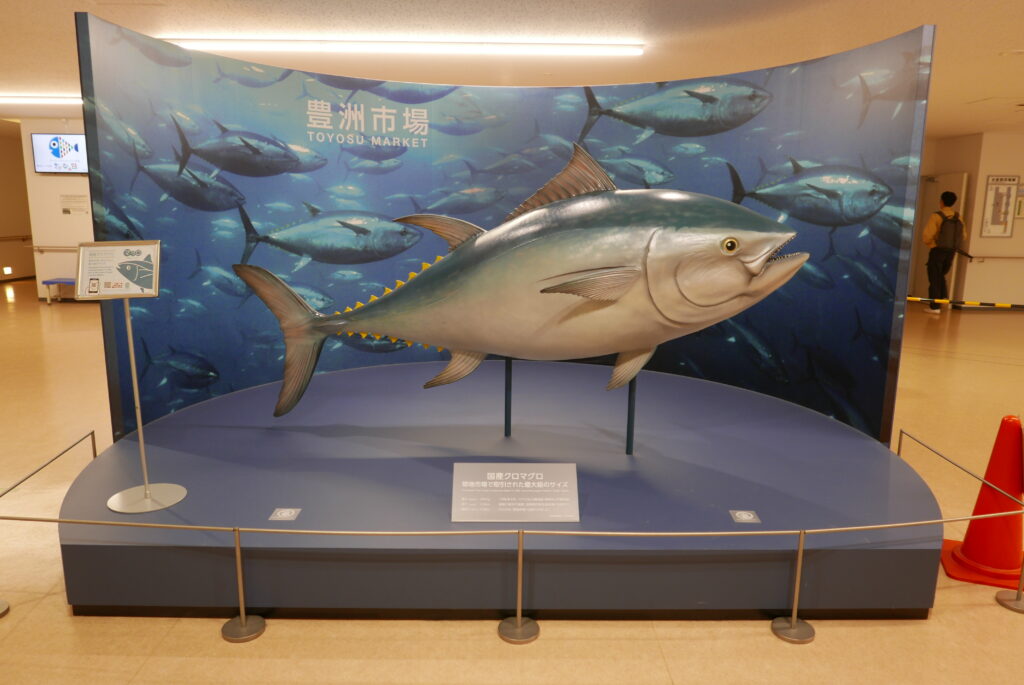
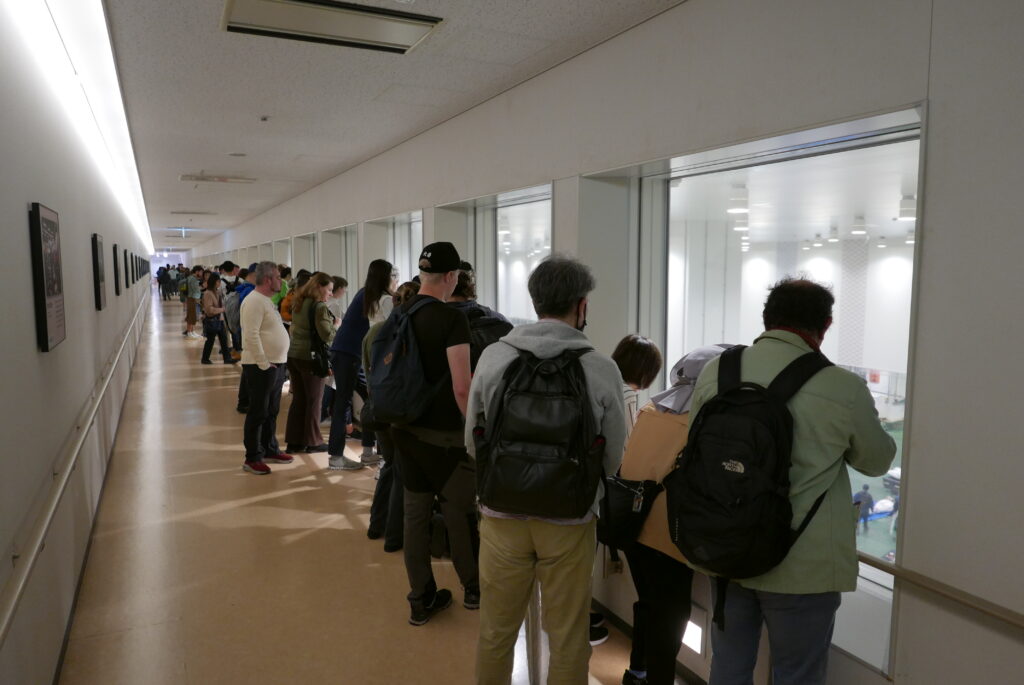
Before the auction, buyers walked around the frozen tunas assorted on the floor and evaluated their qualities by checking the tail cut-down blocks. Some tasted a very tiny piece of tuna out of the tail by picking it with the fook-like tool and tasted it, and others lit the cut surface with a black light torch in their hands, maybe checking the freshness by the tuna’s red meat, which contains blood, I guessed.
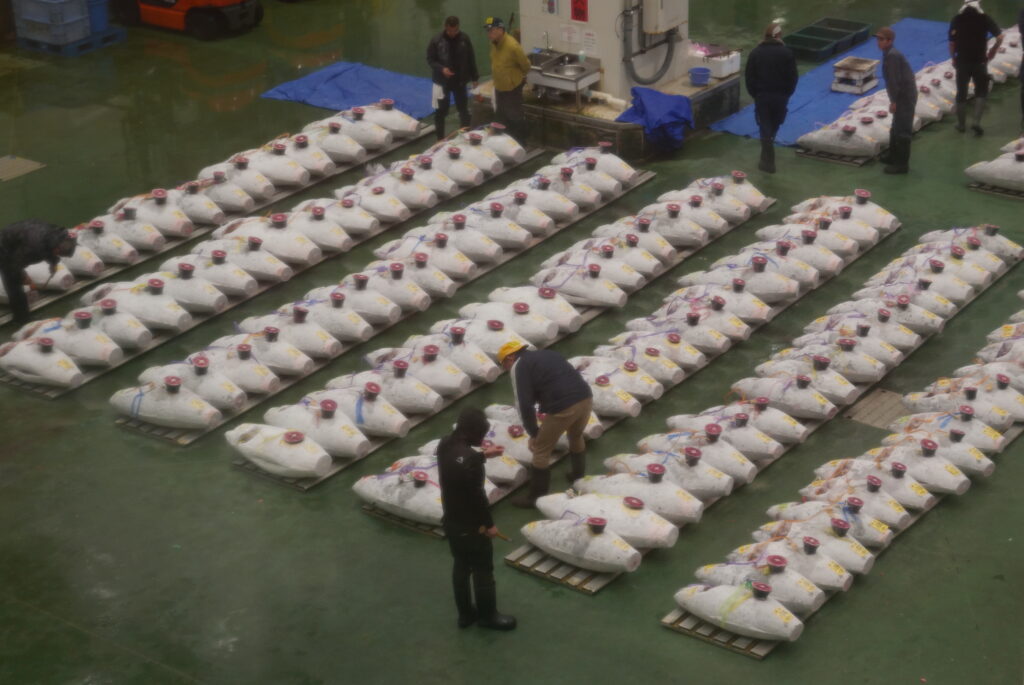
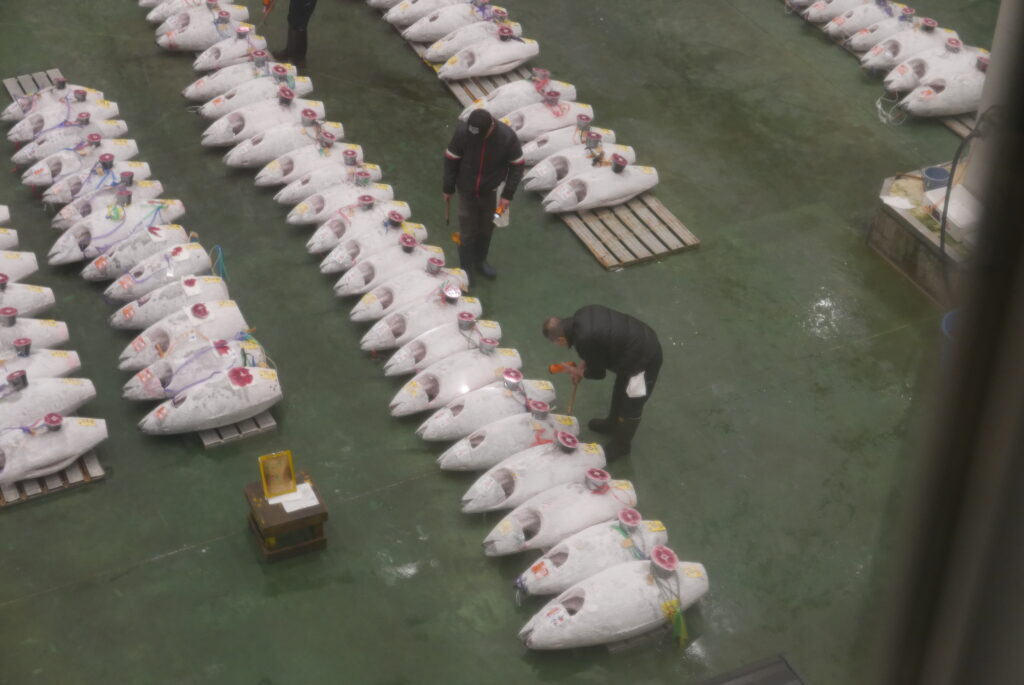
The sight of numerous tunas lying on the market floor is impressive. According to a release from the market office, an average of 50,000 metric tons of tuna are traded here each year. This amounts to approximately 200 tons of tuna daily (calculated based on about 250 open days per year). Not all parts of a tuna are used for sushi, as the large head, hard bones, skin, and other unusable parts are not suitable for sushi preparation. Therefore, let’s estimate that half of a whole tuna can be served as sushi; the tunas on the floor could provide enough for 571,430 sushi dinner plates, based on the data that one piece of tuna sushi requires 15 to 20 grams of tuna (17.5 grams on average). A standard sushi plate includes 10 pieces of sushi. More than 571 thousand sushi dinners—that’s quite incredible!

The auction began promptly with the auctioneer’s ringing handbell (see the photo and video below). He announced the price, and immediately, the buyers raised their hands, displaying the numbers using their unique finger signs, known as “teyari.” If a buyer raises an index finger, it signifies one. If he puts the index finger up and then puts it down, then puts the index and middle fingers together again, it indicates one and two (one-two), which translates to 1,200 yen or 12,000 yen per kilogram. Can you guess what “one-two” means: 1,200 or 12,000? It depends on the range of the usual market prices. The price range also varies in the different fish auctions, and 12,000 is typically used in the tuna auctions.

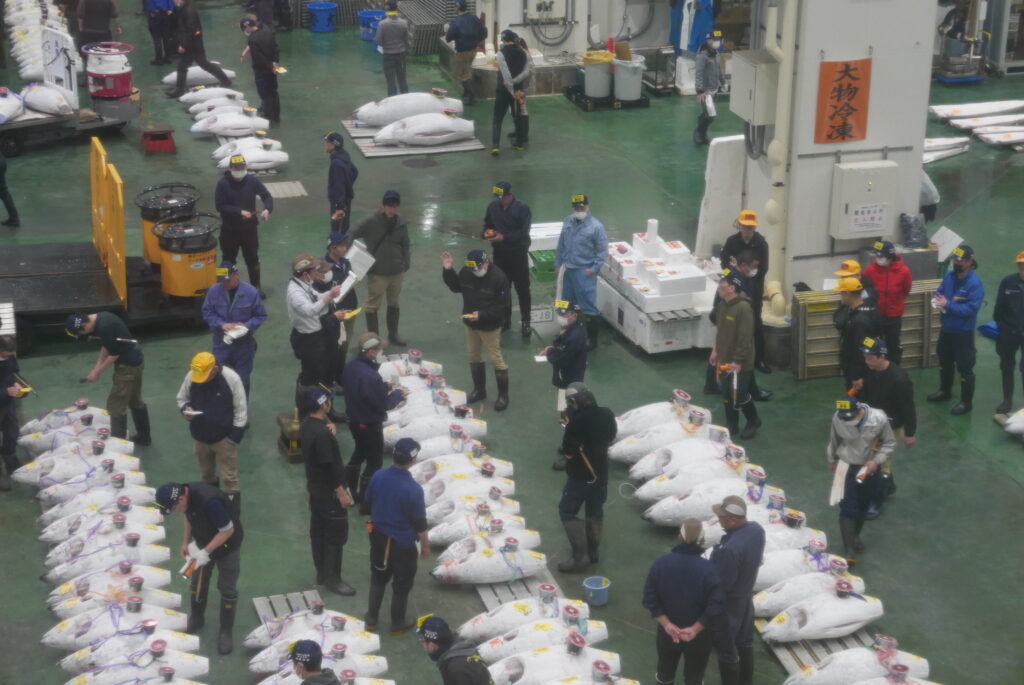
At the right end of the auction floor, only twenty or fewer than forty tuna are ready for the auction. They are fresh tuna, not frozen ones. Compared with the huge number of frozen tunas on the same floor, it demonstrates how valuable and rare fresh tuna is.

After the tuna auction ended at 6:30, it’s time for breakfast at the Toyosu Market! On the way back to the entrance, you can find several signboards for sushi restaurants along the alley in the building. Unfortunately, only two or three restaurants were open before 7:00, so I dove into my favorite, Okame Sushi, and ordered an Okame Nigiri plate, a 9-piece sushi course with miso soup. The chef made my sushi just before me with professional, brisk movements. All the served sushi was excellent. I am so delighted!
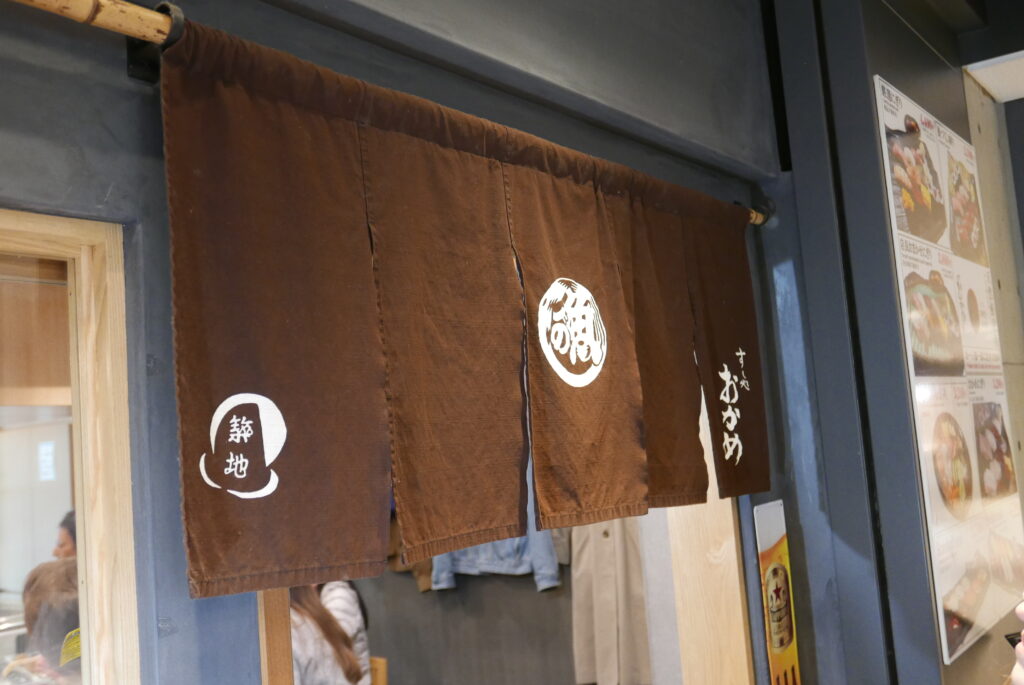
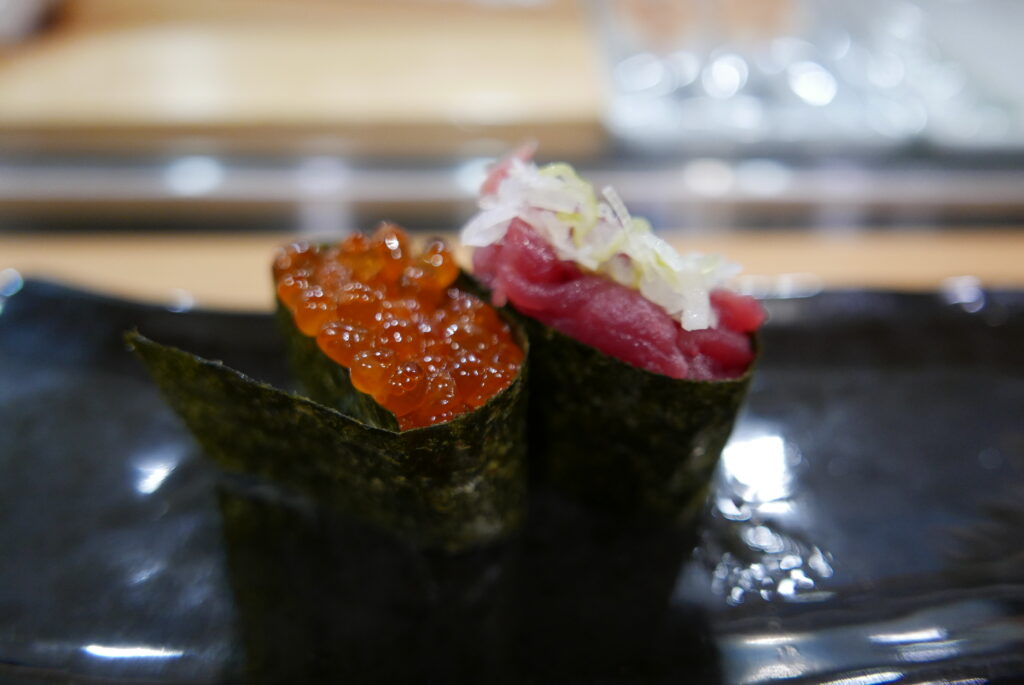
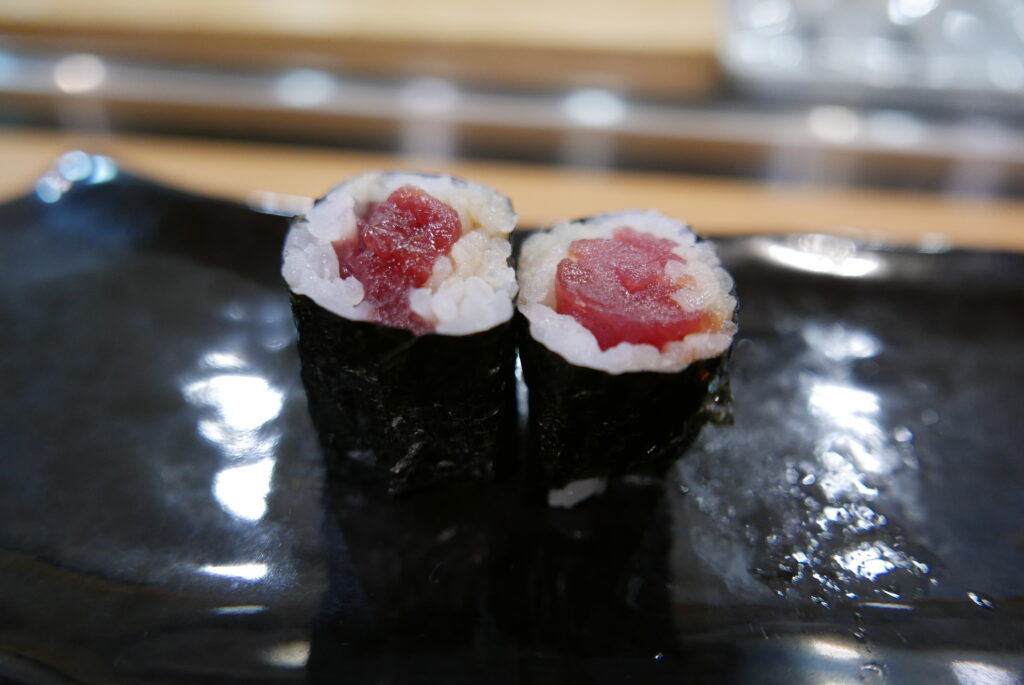
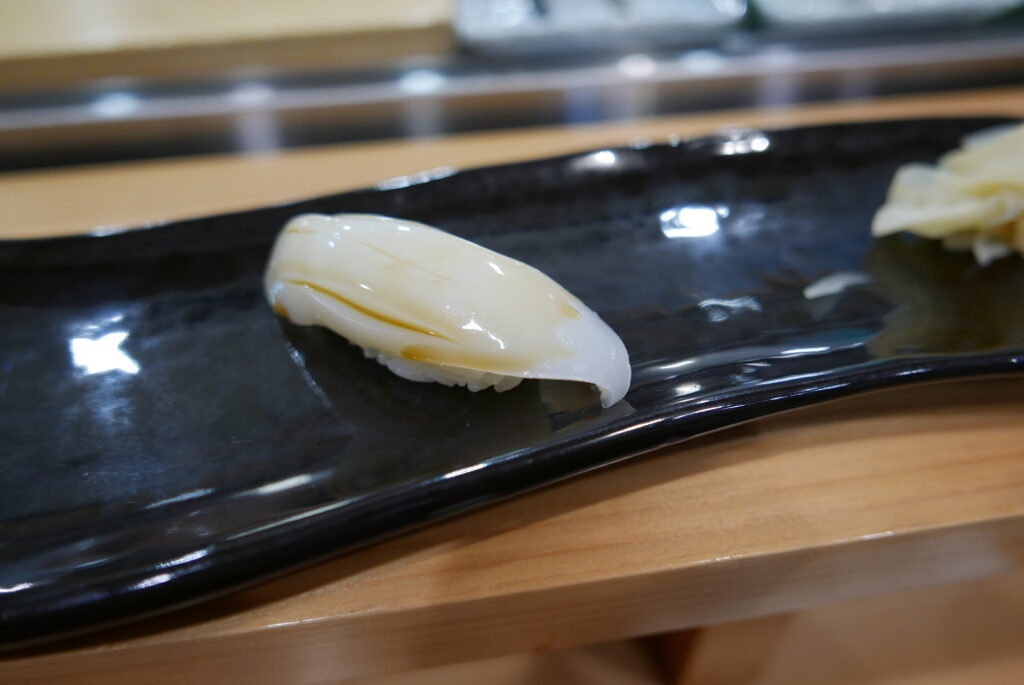
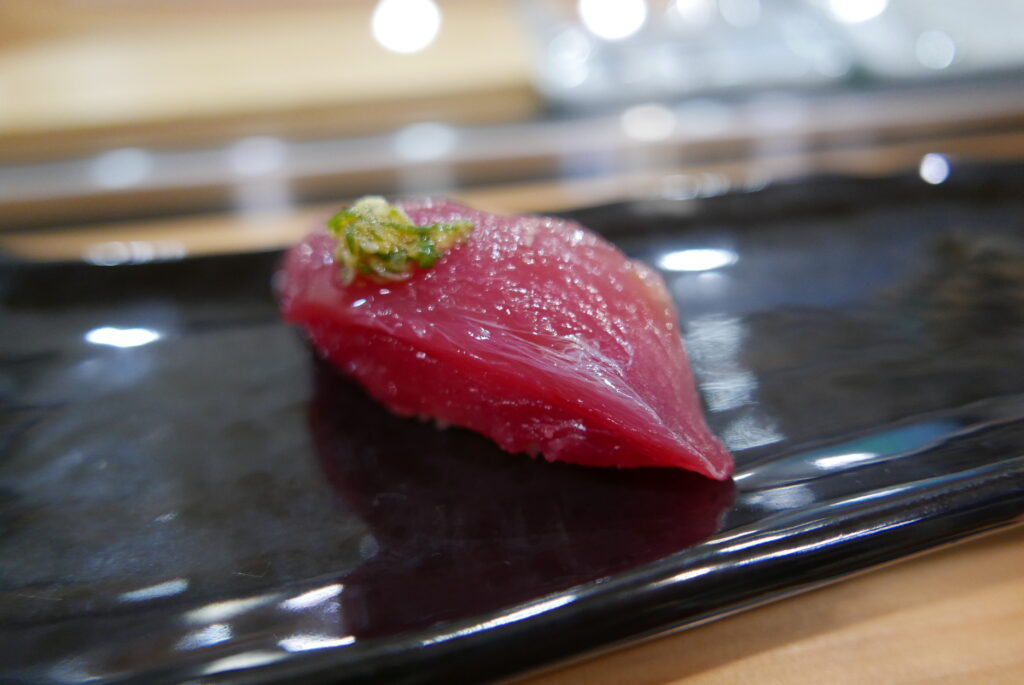

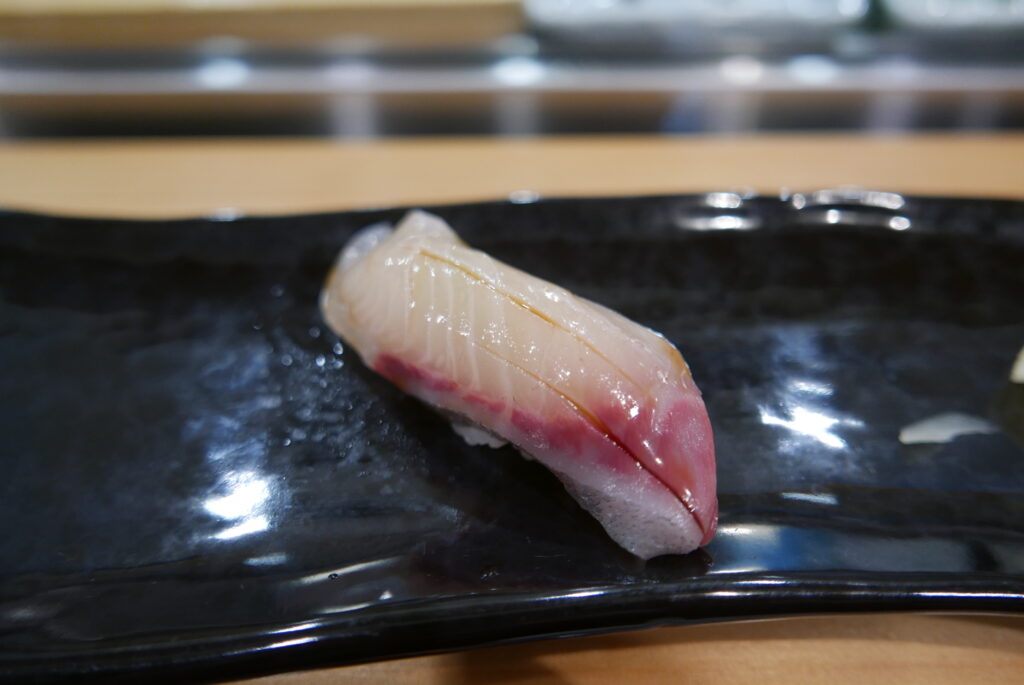
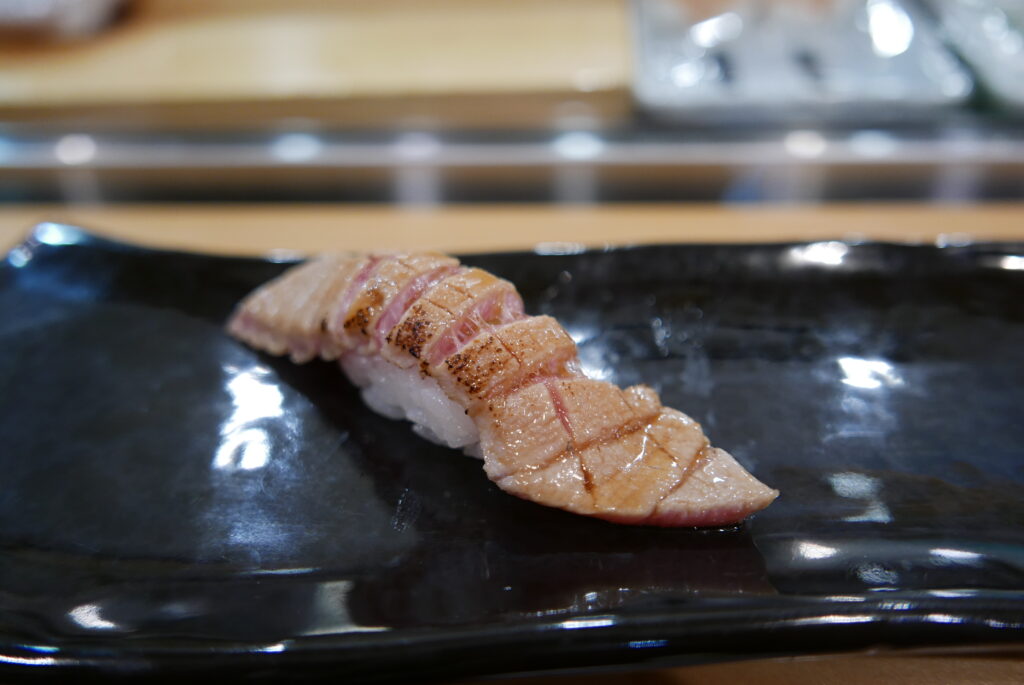
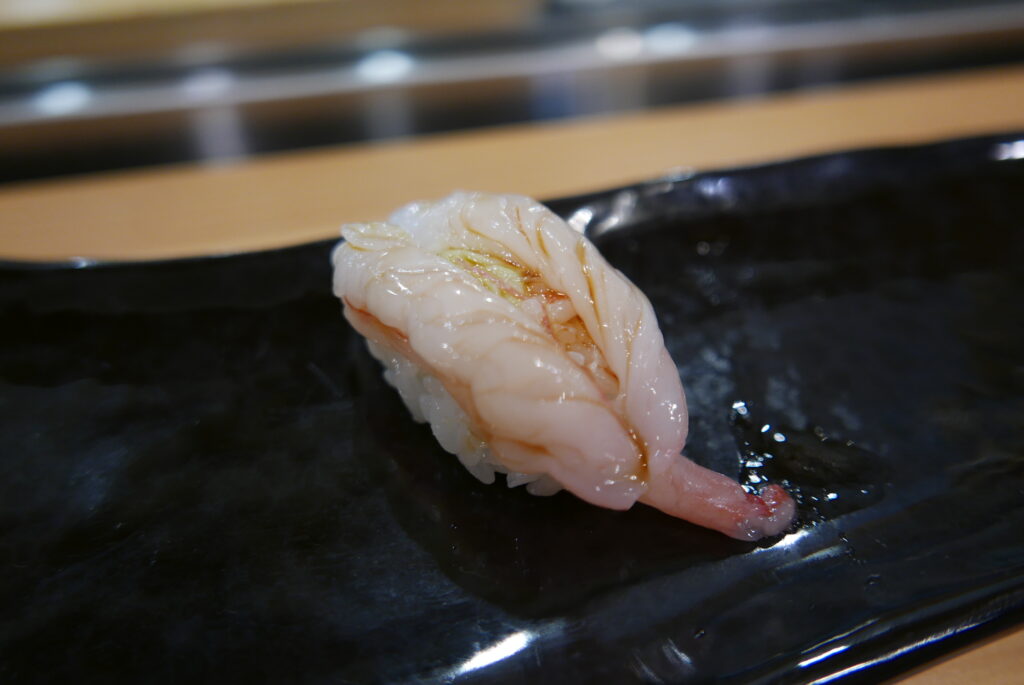
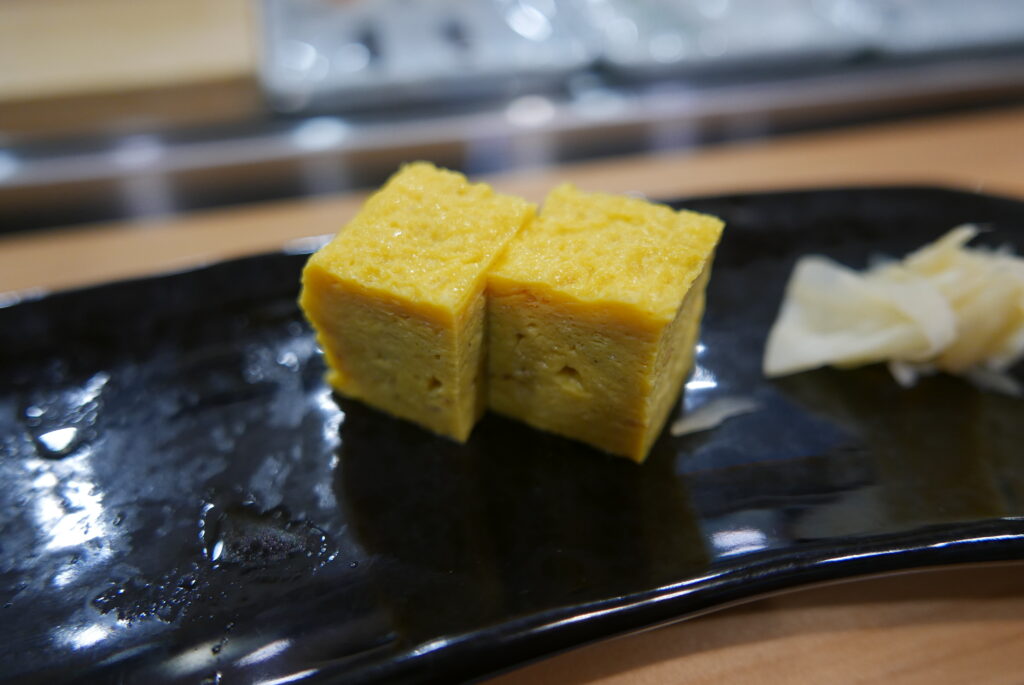
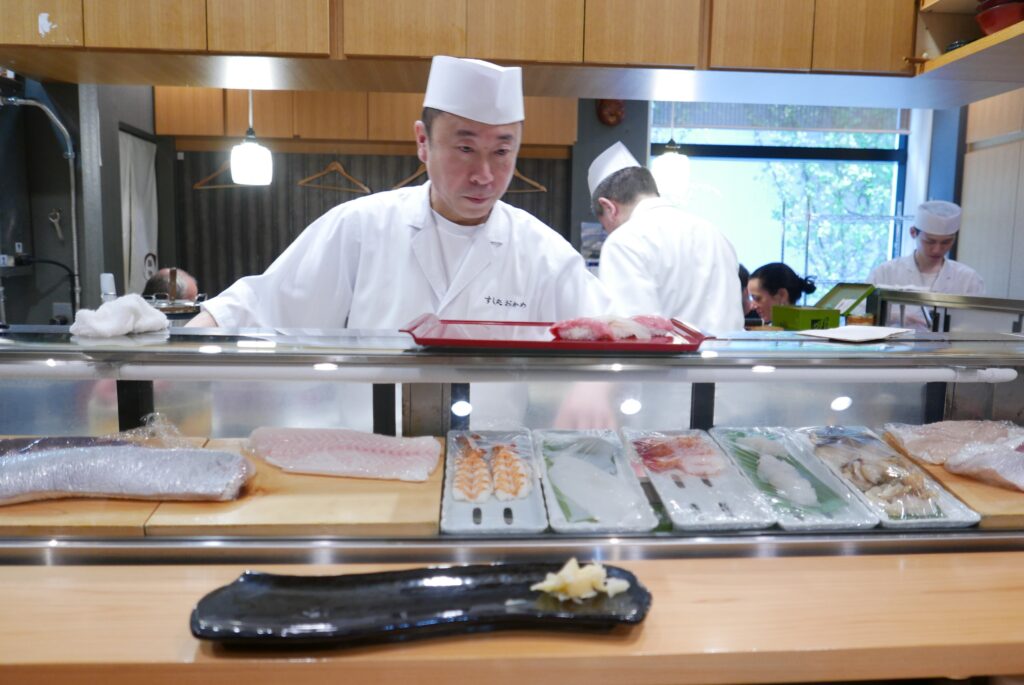
Thank you for reading my post.
If you need an English-speaking guide to explore the Toyosu Market, please click “Contact me!” below. I am willing to help you create an unforgettable private tour. Let’s enjoy the amazing Tokyo with me!
Please also leave your feedback on this post in the comment box at the bottom. I am willing to hear your opinions, requests, and suggestions.
Please click the links to get updated via my X (former Twitter) and Instagram.
X (former Twitter): https://x.com/ToruGuide
Instagram: https://www.instagram.com/toruhigaki/
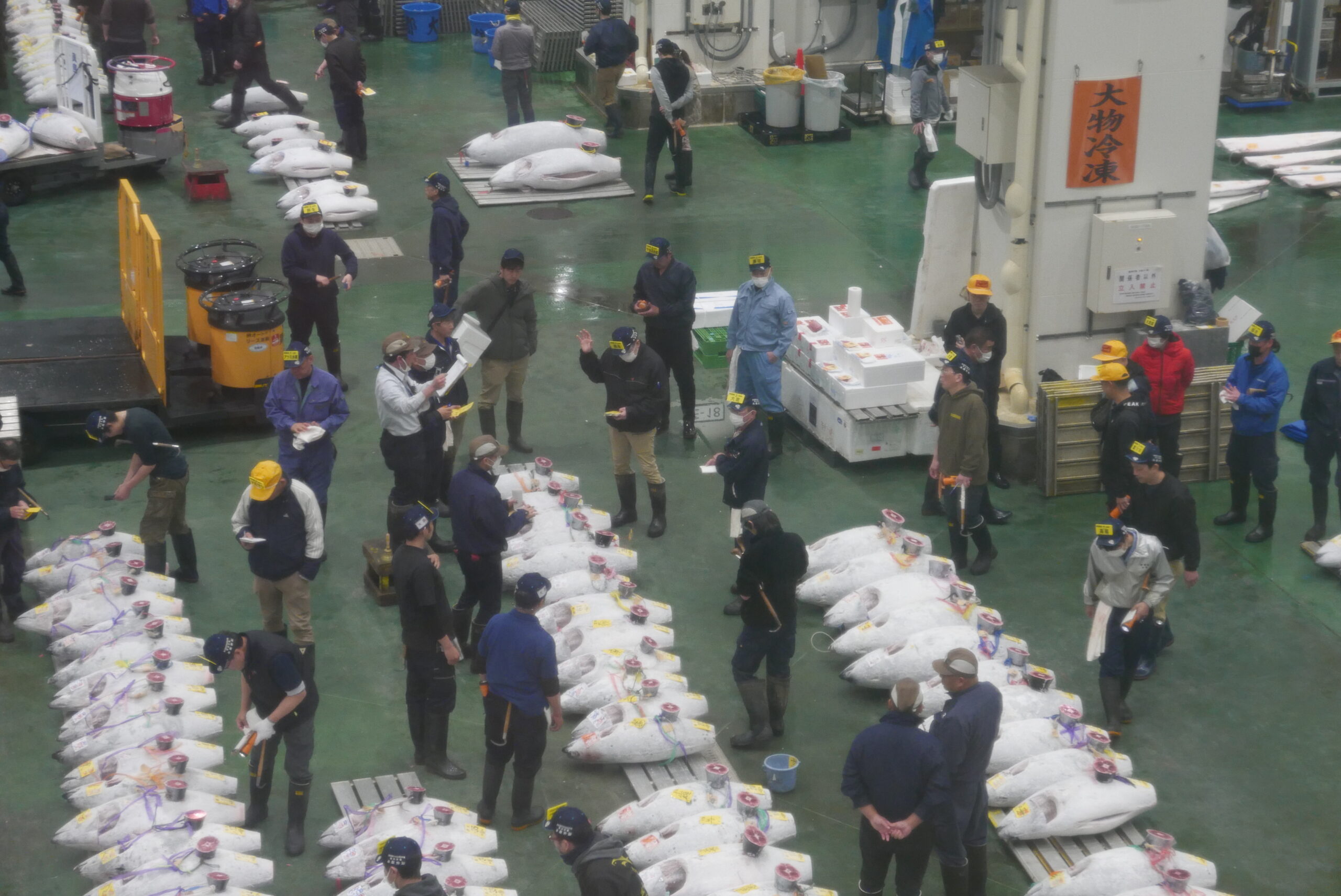


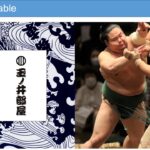
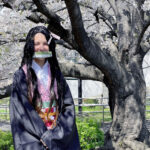
Comment